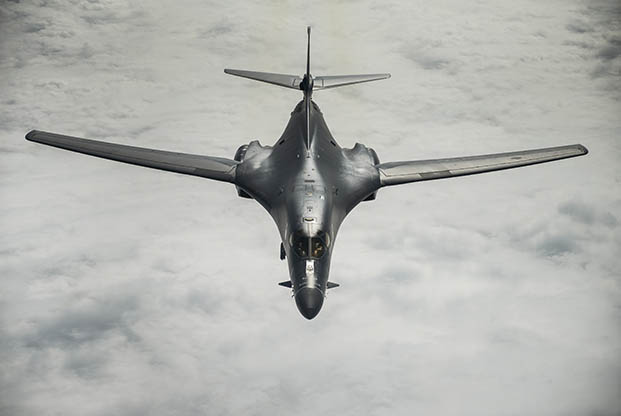
The May 2018 B-1B incident was caused by an egress system issue, an investigation found. Air Force photo by SSgt. Peter Reft.
The manufacturer of the B-1B’s ejection seat says it’s not to blame for the May B-1B incident in which the crew was forced to make an emergency landing during a fire emergency after one ejection system failed.
The investigation found that a component of the egress system was “crimped,” and when the crewmember pulled the handle, the signal didn’t make it to the ejection seat.
UTC Aerospace Systems spokesman Al Killeffer said in a statement emailed to Air Force Magazine Tuesday that the egress system in the B-1 includes the company’s seat, a canopy removal/hatch jettison, and a sequencing system, which he said “controls the aircraft ejection event.” In this incident, the sequencing system jettisoned one of the hatches but did not send the signal to the seat to eject, said Killeffer.
“So while there was no issue with our seat, the Egress Sequencing System, which we do not manufacture, must function correctly for the seat to fire,” he said.
Air Force Global Strike Command awarded the B-1 crew Distinguished Flying Crosses for their work saving the crew and the bomber that day.